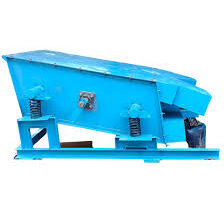Shopify Store Speed Optimization: A Comprehensive Guide
Shopify Store Speed Optimization: A Comprehensive Guide
A fast-loading Shopify Store Speed Optimization is essential for enhancing user experience, improving search engine rankings, and boosting conversions. This guide will cover essential steps and strategies for optimizing your Shopify store’s speed.
1. Why Speed Optimization Matters for Shopify Stores
- Improved User Experience: Fast-loading stores reduce bounce rates and keep visitors engaged.
- Better SEO Rankings: Google prioritizes fast websites in search results.
- Higher Conversion Rates: Faster stores lead to better customer satisfaction and increased sales.
2. Tools to Analyze Your Shopify Store Speed
- Google PageSpeed Insights: Measures speed and provides recommendations.
- GTmetrix: Offers detailed speed reports and optimization tips.
- Shopify Speed Report: Available in the Shopify dashboard for specific insights.
3. Strategies for Shopify Speed Optimization
A. Optimize Images
- Use compressed formats (e.g., JPEG, WebP).
- Resize images before uploading.
- Implement lazy loading to defer image loading.
B. Choose a Lightweight Shopify Theme
- Use fast, clean-coded themes like Dawn or Debut.
- Avoid feature-heavy themes that add unnecessary bloat.
C. Minimize Apps Usage
- Remove unused apps.
- Use lightweight or multi-purpose apps to reduce load times.
- Disable app code remnants after uninstalling.
D. Implement Lazy Loading
- Delay loading non-essential resources like images and videos below the fold.
- Use Shopify apps or built-in functionality for lazy loading.
E. Leverage Browser Caching
- Enable browser caching to store static resources like images, CSS, and JavaScript on users’ devices.
F. Use a Content Delivery Network (CDN)
- Shopify uses a built-in CDN, but ensure it’s active.
- A CDN distributes content to servers closer to your visitors.
G. Optimize Code
- Minify CSS, JavaScript, and HTML files to reduce file sizes.
- Avoid excessive use of custom code and unnecessary scripts.
H. Reduce Redirects
- Minimize redirects as they add latency to the page load time.
- Regularly audit and clean up broken or outdated links.
I. Limit External Scripts
- Avoid heavy external scripts like unnecessary tracking codes or third-party widgets.
- Only integrate essential tools like analytics and payment gateways.
J. Enable Accelerated Mobile Pages (AMP)
- Use AMP to provide faster mobile experiences, especially for product and landing pages.
4. Testing and Monitoring Store Speed
- Regular Audits: Test your store speed frequently after optimizations.
- Track Performance: Use tools like Google Analytics to monitor bounce rates and user behavior.
- Continuous Improvement: Adjust optimizations as your store grows or changes.
5. Shopify-Specific Optimization Tips
- Upgrade Your Shopify Plan: Higher-tier plans often come with better server resources.
- Optimize Fonts: Use system fonts or serve fonts via Shopify’s native integration.
- Disable Animations: Reduce the use of heavy animations and transitions.
6. When to Seek Professional Help
If you’ve implemented all the above strategies and still face speed issues, consider hiring a Shopify developer or agency to optimize your store.
Conclusion
Speed optimization is a continuous process that requires regular monitoring and adjustments. By following the strategies outlined above, you can ensure your Shopify store delivers a fast, seamless experience for your customers, resulting in better user engagement, higher rankings, and increased revenue. Remember, a fast store isn’t just good for performance—it’s great for your business success!




